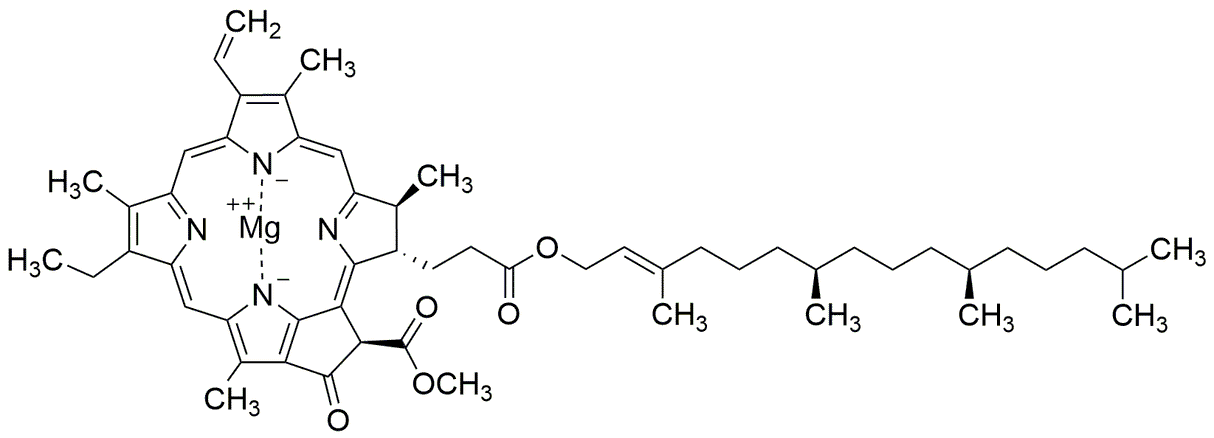Chlorophyll is widely utilized in research focused on:
- Photosynthesis Studies: Researchers use chlorophyll to investigate the process of photosynthesis, helping to understand how plants convert sunlight into energy. This knowledge is crucial for improving crop yields and developing sustainable agricultural practices.
- Natural Dyes: In the textile and food industries, chlorophyll serves as a natural dye. Its vibrant green color is used in products ranging from organic food colorants to eco-friendly textiles, appealing to consumers seeking sustainable options.
- Health Supplements: Chlorophyll is often included in dietary supplements for its potential health benefits, such as detoxification and antioxidant properties. This application caters to the growing market for natural health products.
- Environmental Monitoring: Chlorophyll levels in water bodies are monitored to assess the health of aquatic ecosystems. This application is vital for environmental scientists working on water quality and ecosystem management.
- Biotechnology: In biotechnology, chlorophyll is used in the development of biofuels and bioplastics, offering a renewable alternative to fossil fuels. This application supports the transition to more sustainable energy sources.
General Information
Properties
Safety and Regulations
Applications
Chlorophyll is widely utilized in research focused on:
- Photosynthesis Studies: Researchers use chlorophyll to investigate the process of photosynthesis, helping to understand how plants convert sunlight into energy. This knowledge is crucial for improving crop yields and developing sustainable agricultural practices.
- Natural Dyes: In the textile and food industries, chlorophyll serves as a natural dye. Its vibrant green color is used in products ranging from organic food colorants to eco-friendly textiles, appealing to consumers seeking sustainable options.
- Health Supplements: Chlorophyll is often included in dietary supplements for its potential health benefits, such as detoxification and antioxidant properties. This application caters to the growing market for natural health products.
- Environmental Monitoring: Chlorophyll levels in water bodies are monitored to assess the health of aquatic ecosystems. This application is vital for environmental scientists working on water quality and ecosystem management.
- Biotechnology: In biotechnology, chlorophyll is used in the development of biofuels and bioplastics, offering a renewable alternative to fossil fuels. This application supports the transition to more sustainable energy sources.
Documents
Safety Data Sheets (SDS)
The SDS provides comprehensive safety information on handling, storage, and disposal of the product.
Product Specification (PS)
The PS provides a comprehensive breakdown of the product’s properties, including chemical composition, physical state, purity, and storage requirements. It also details acceptable quality ranges and the product's intended applications.
Certificates of Analysis (COA)
Search for Certificates of Analysis (COA) by entering the products Lot Number. Lot and Batch Numbers can be found on a product’s label following the words ‘Lot’ or ‘Batch’.
*Catalog Number
*Lot Number
Certificates Of Origin (COO)
This COO confirms the country where the product was manufactured, and also details the materials and components used in it and whether it is derived from natural, synthetic, or other specific sources. This certificate may be required for customs, trade, and regulatory compliance.
*Catalog Number
*Lot Number
Safety Data Sheets (SDS)
The SDS provides comprehensive safety information on handling, storage, and disposal of the product.
DownloadProduct Specification (PS)
The PS provides a comprehensive breakdown of the product’s properties, including chemical composition, physical state, purity, and storage requirements. It also details acceptable quality ranges and the product's intended applications.
DownloadCertificates of Analysis (COA)
Search for Certificates of Analysis (COA) by entering the products Lot Number. Lot and Batch Numbers can be found on a product’s label following the words ‘Lot’ or ‘Batch’.
*Catalog Number
*Lot Number
Certificates Of Origin (COO)
This COO confirms the country where the product was manufactured, and also details the materials and components used in it and whether it is derived from natural, synthetic, or other specific sources. This certificate may be required for customs, trade, and regulatory compliance.

